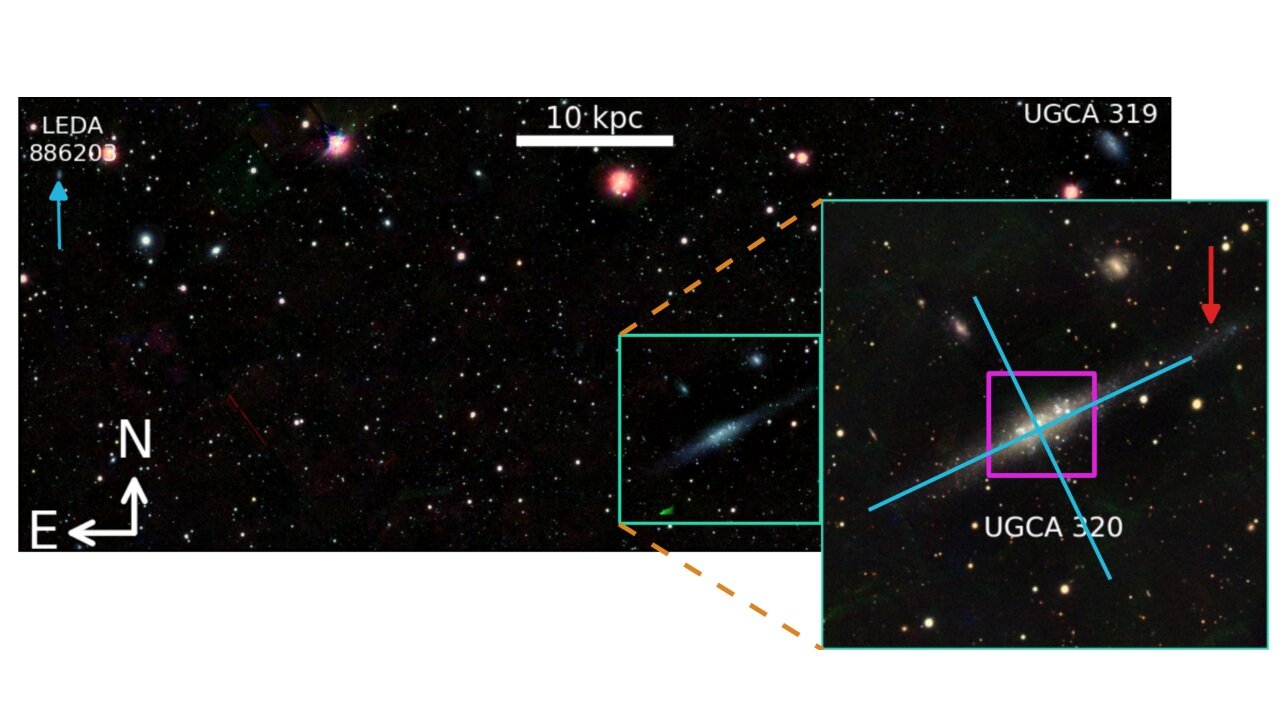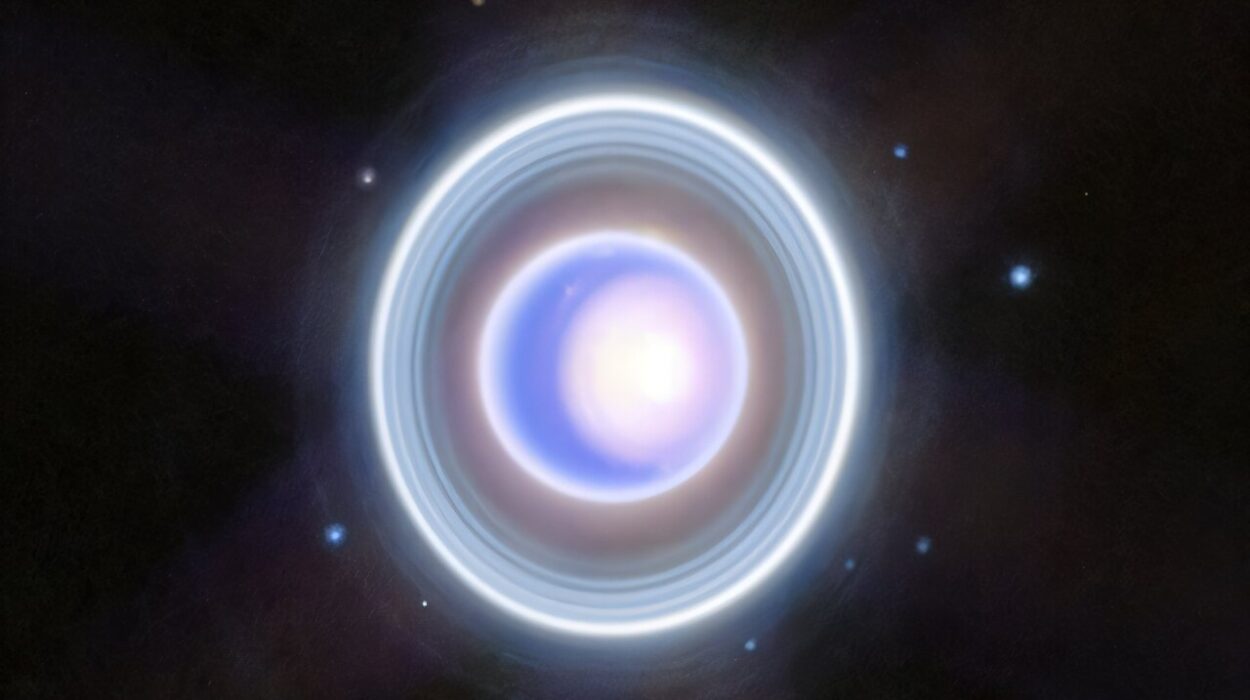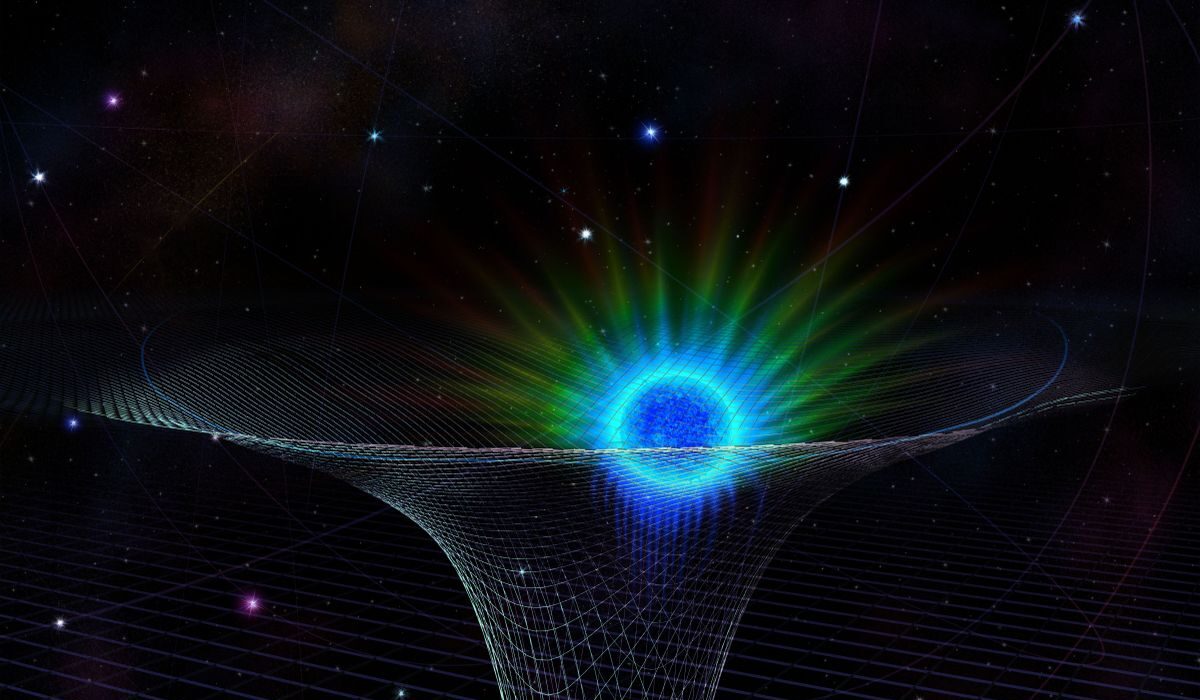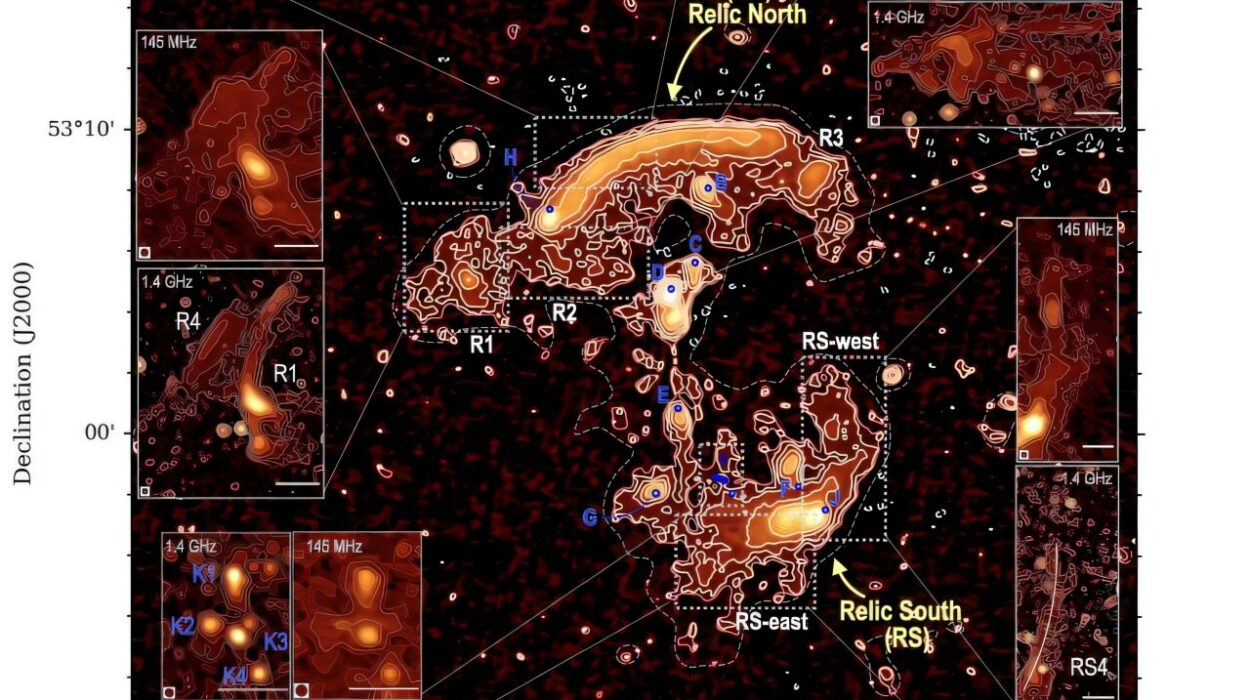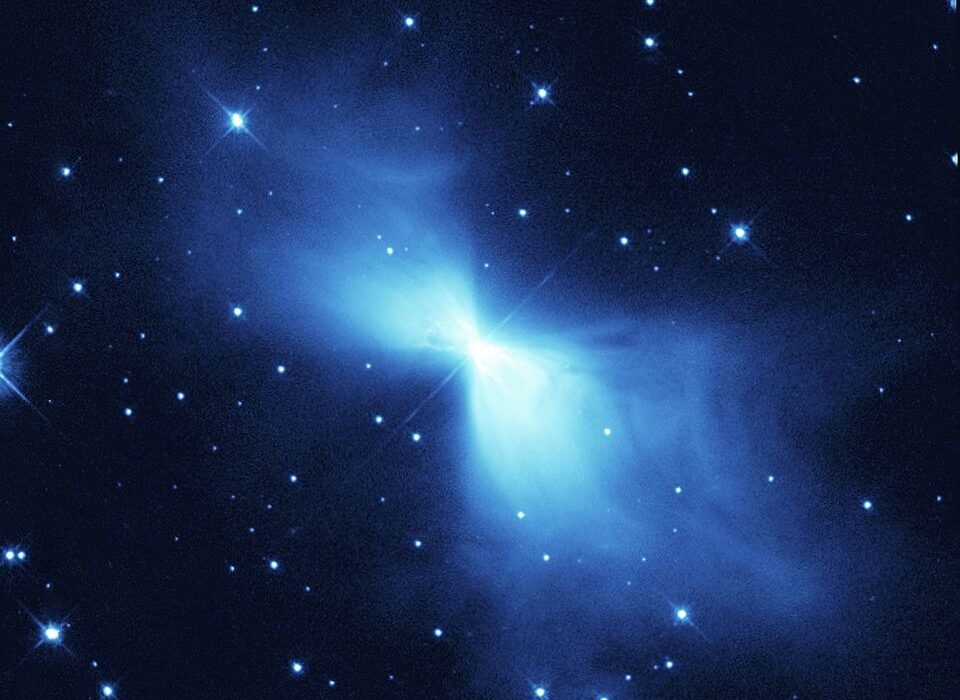Far away in the constellation Virgo, nearly 20 million light years from Earth, lies a quiet, unassuming galaxy. To the casual observer, it might seem insignificant—small, faint, and irregular in shape. Yet, as astronomers from South Africa recently revealed, this little galaxy known as UGCA 320 holds secrets that can help us understand not only how stars are born but also how galaxies themselves evolve across cosmic time.
UGCA 320, sometimes referred to as DDO 161 or HIPASS J1303-17b, is a dwarf irregular galaxy. Unlike the majestic spirals of the Milky Way or Andromeda, dwarf irregulars are chaotic in appearance, lacking the graceful arms or elliptical symmetry we often associate with galaxies. But what they lack in elegance, they make up for in scientific importance. They are the laboratories of the universe—small, simple systems that reveal the fundamental physics of how stars and galaxies grow.
Astronomers, led by Adebusola B. Alabi of North-West University in South Africa, decided to look closely at UGCA 320. Despite its proximity, very little was known about it. Using some of the world’s most powerful telescopes—the Hubble Space Telescope (HST), the Southern African Large Telescope (SALT), and the Very Large Telescope (VLT)—they embarked on a multi-band observational campaign. Their findings, recently published on the arXiv preprint server, reveal a galaxy rich in gas, dominated by young stars, and shaped by cosmic interactions.
The Anatomy of UGCA 320
At first glance, UGCA 320 may appear small compared to giants like the Milky Way, but it is still vast beyond imagination. With a stellar mass equivalent to about 93 million suns, it is a lightweight in cosmic terms—our own galaxy is nearly a thousand times more massive. It is a gas-rich and optically blue system, meaning that it shines brightly in wavelengths associated with young, hot stars.
Its star formation rate is modest, less than 0.02 solar masses per year. In other words, UGCA 320 forms about one new star every few decades. That may seem slow, but it is just enough to keep the galaxy alive, glowing with youthful energy. And the presence of abundant cold gas ensures that star formation will continue for billions of years into the future. In fact, astronomers estimate it could take nearly 50 billion years for UGCA 320 to exhaust its reserves—far longer than the current age of the universe itself.
The Colors of Youth
One of the first things the astronomers noticed was the unusual color profile of the galaxy. Across its entire disk, UGCA 320 shines with a consistent, bright blue hue. This blueness is not just an aesthetic trait—it is a signal of youth. Blue light in galaxies typically comes from very young, massive stars that burn hot and bright but live short lives, often only a few million years.
The flat color profile suggests that UGCA 320 has been forming stars across its disk rather uniformly, rather than concentrating new star birth in one region. The data revealed that while the majority of its stars are young—many less than 120 million years old—the galaxy is also home to a much older population. Some of its stars are more than 10 billion years old, remnants from the early universe, quietly orbiting in the background.
This combination of ancient and newborn stars makes UGCA 320 a time capsule, preserving both the echoes of the cosmic past and the flickering promise of the cosmic future.
Rivers of Gas and the Breath of Stars
Stars are not born in isolation. They emerge from vast clouds of hydrogen gas that collapse under gravity, ignited by nuclear fusion in their cores. In UGCA 320, astronomers detected a remarkable abundance of ionized gas—gas energized by the ultraviolet radiation streaming from hot, young stars.
This gas forms striking patterns. The brightest regions appear clumpy, scattered above the galaxy’s main disk toward the northeast, while more diffuse streams trail below in the southwest. These patterns suggest that the galaxy’s gas is not simply sitting quietly but is being stirred and shaped, perhaps by winds from newborn stars or by gravitational encounters with neighboring galaxies.
Gas is the lifeblood of galaxies. In UGCA 320, it serves as both the cradle of star formation and the marker of recent activity. Without it, the galaxy would fade into dormancy. With it, UGCA 320 continues to shine as a cosmic nursery.
A Galaxy in Motion
Galaxies are not static—they rotate, breathe, and evolve. By carefully analyzing the motions of both stars and gas, astronomers uncovered the dynamic heartbeat of UGCA 320. Both its stars and ionized gas rotate in the same direction, though not at the same pace. Interestingly, in the galaxy’s innermost regions, the stars appear to move faster than the gas, reaching velocities of about 30 kilometers per second.
Beyond its central disk, the galaxy’s kinematics reveal something even more intriguing. At a radius of about 1,000 light years, both the stars and gas exhibit a sharp transition in their motion. Distortions in the outer disk hint that UGCA 320 may have recently interacted with another galaxy, disrupting its structure.
The likely culprit is UGCA 319, a nearby companion. Galaxies, even dwarfs, are rarely completely isolated. They pull on each other with gravity, sometimes gently stirring each other’s disks, other times merging violently. For UGCA 320, the evidence suggests a recent tidal interaction that shaped its present-day form.
Lessons from a Dwarf Galaxy
Why does a galaxy like UGCA 320 matter? After all, it is small, faint, and not nearly as spectacular as the Milky Way. The answer lies in what it represents. Dwarf irregular galaxies are among the most common types in the universe, yet they are also among the least understood. They are fragile, easily disturbed by their environments, and yet they hold onto enormous reservoirs of gas.
By studying galaxies like UGCA 320, astronomers can trace the processes of star formation, gas dynamics, and galactic interactions on small scales. These insights scale upward, helping us understand how larger galaxies form and evolve. In many ways, dwarfs like UGCA 320 are the building blocks of cosmic architecture.
They also serve as windows into the past. Their old stars carry the signatures of early cosmic conditions, while their young stars reflect ongoing evolution. Observing both populations in one galaxy allows astronomers to stitch together a more complete story of the universe’s history.
The Human Touch in the Stars
Behind the data, spectra, and images lies a very human story—the story of astronomers who dedicate their lives to chasing faint signals from distant galaxies. Using telescopes that peer across millions of light years, the team studying UGCA 320 pieced together a narrative from whispers of light and subtle shifts in spectral lines.
Their work is not just about one galaxy. It is about humanity’s enduring need to understand. To stand on Earth, a tiny planet circling a modest star, and yet to reach across the cosmos and reconstruct the life of a galaxy nearly 20 million light years away—that is both science and poetry.
A Galaxy’s Future
What lies ahead for UGCA 320? With its vast reservoirs of gas and slow star-formation rate, it is likely to remain active long after galaxies like the Milky Way have quieted. Over tens of billions of years, it will continue to form stars, cycling through generations of light. Its interactions with UGCA 319 may shape it further, perhaps even leading to a merger that creates a new system altogether.
In cosmic terms, UGCA 320 is still a child—small, restless, growing. Its story is just one among billions, yet each galaxy adds a vital note to the symphony of the universe.
A Cosmic Reminder
The study of UGCA 320 is more than an academic achievement. It is a reminder of the vastness of the universe and the delicate beauty hidden within its smallest corners. While grand spiral galaxies may command attention, it is often the overlooked, irregular dwarfs that whisper the deepest truths.
In its blue glow, in its mixture of old and young stars, in its clumps of ionized gas and distorted motions, UGCA 320 tells us that galaxies are living entities—dynamic, evolving, endlessly complex. And it tells us something about ourselves too: that our thirst for knowledge is boundless, that we are capable of unraveling mysteries across millions of light years, and that even the smallest galaxies can hold the keys to understanding the cosmos.
More information: Adebusola B. Alabi et al, Stars and ionized gas in UGCA 320: a nearby gas-rich, dwarf Irregular galaxy, arXiv (2025). DOI: 10.48550/arxiv.2509.20359
